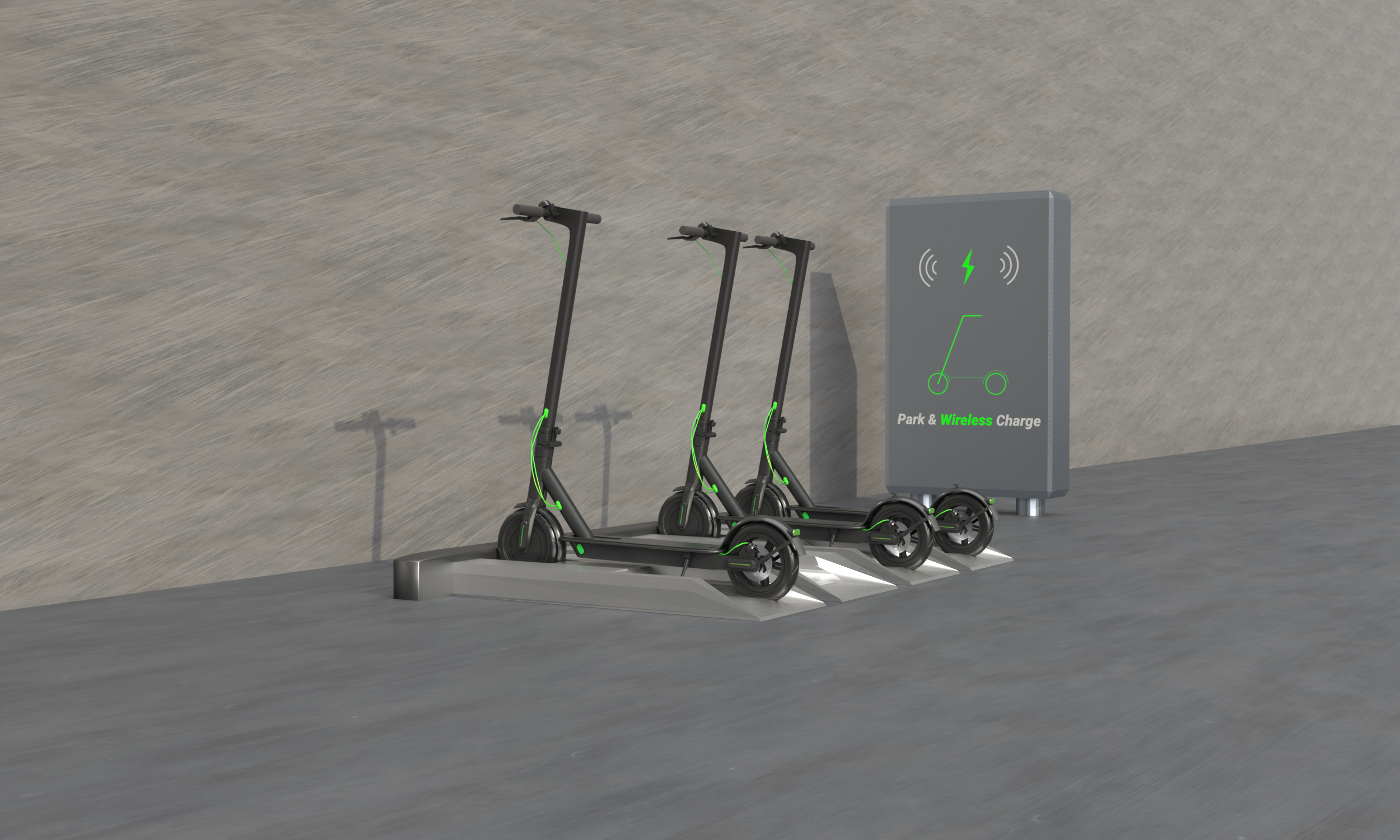Contact or Contactless? E-scooter charging dock
According to Wikipedia, a scooter-sharing system is a shared transport service in which electric motorized scooters (also referred to as e-scooters) are made available to use for short-term rentals. E-scooters are typically "dockless", meaning that they do not have a fixed home location and are dropped off and picked up from certain locations in the service area.
In 2012, Scoot Networks released a moped-style vehicle that provided a short-range rental of scooters. In 2017, Bird and Lime introduced dockless electric kick scooters. Since its launch in Santa Monica, California, United States, Bird expanded its services to over 100 cities and reached a valuation of 2 billion dollars in 2018. In the same year, Lime amassed over 11.5 million rides. Lyft and Uber, the largest ride-sharing companies in the U.S., introduced their own electric scooter-sharing services in 2018. By 2030, the global e-scooter market is expected to be valued at 300 billion to 500 billion dollars.
However, the dockless model is problematic. The most critical issue is the management cost. Not only do operators need to hire people to recycle the e-scooters for charging or battery swapping, but the city governments are also troubled by the randomly abandoned e-scooters to mess the city. As a result, many cities are trying to limit the deployments of dockless e-scooters.
From the city management's point of view, the goal is to give all citizens access to the green public transit, and you need to ensure those people have access to the e-scooters, so the docked model is the easiest way to
ensure this happens.
Instead, in Korea, we see a different approach. LG, the 2nd largest electronics vendor, has announced a contactless charging dock for e-scooters. And at least two other vendors are working in the e-scooter contactless charging dock design and deployment in Korea.
We think the e-scooter charging dock will repeat the mobile phone charging history: Initially, contact point charging is applied in some phone models, but today only contactless (wireless) charging is used in phone designs.
Reliability is the main reason that contactless charging replaces contact point charging. Charging is everyday work, so the repeated removal and touch process make the contact points easy to malfunction after a while. It isn't a pleasant experience while you want to charge something, but it cannot work. Instead, since everything is sealed well, contactless charging can keep a reliable charging experience for a very long period.
It appears that contactless charging is superior to contact point charging. Except for the reliability, contactless charging can go on even when the e-scooters are not parked well into the dock. However, contactless charging is more costly than contact charging. The below figure shows the comparison between contactless charging and contact charging. An additional DC-AC block is needed at the dock side, and an additional AC-DC block is needed at the vehicle side. Sealed coils replace the exposed contact points. This increased cost makes developers and operators hesitate to apply contactless charging into their dock design.
We, Tseetech, are born to solve the concerns of adopting contactless charging into e-scooter charging docks. We make a great balance for the cost and performance in the wireless power module design. We believe that we can help you to introduce contactless charging into your dock design comfortably. Don’t wait! Contact us to get a solution to begin your adventure.








